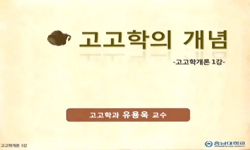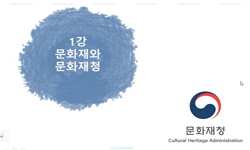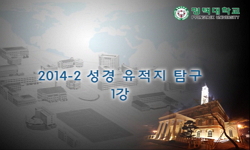This work is about periodic change process of tombs in the Goryo society after setting chronicles based on the relics from inner space of tombs and characteristics for tomb types centering around tombs from Chungcheong Region during the Goryo period. ...
http://chineseinput.net/에서 pinyin(병음)방식으로 중국어를 변환할 수 있습니다.
변환된 중국어를 복사하여 사용하시면 됩니다.
- 中文 을 입력하시려면 zhongwen을 입력하시고 space를누르시면됩니다.
- 北京 을 입력하시려면 beijing을 입력하시고 space를 누르시면 됩니다.
https://www.riss.kr/link?id=T10110201
- 저자
-
발행사항
대전 : 한남대학교 대학원, 2005
-
학위논문사항
학위논문(석사)-- 한남대학교 대학원 : 문화재학과 고고학전공 2005. 8
-
발행연도
2005
-
작성언어
한국어
- 주제어
-
KDC
902.5 판사항(4)
-
DDC
930.1 판사항(21)
-
발행국(도시)
대전
-
형태사항
150p. : 삽도 ; 26cm
-
일반주기명
참고문헌: p. 142-147
- 소장기관
-
0
상세조회 -
0
다운로드
부가정보
다국어 초록 (Multilingual Abstract)
This work is about periodic change process of tombs in the Goryo society after setting chronicles based on the relics from inner space of tombs and characteristics for tomb types centering around tombs from Chungcheong Region during the Goryo period.
The ancestral rites held before grave and the funeral institution as a background, there are various elements including boundaries of graves, the main body of burial, tomb furnishings, etc. Because of this, it is a good resource to study cultural system and locality during the Goryo period. Chungcheong area is a place with cultural atmosphere of Baek-Je, Koguryo, and Shilla during the Three Kingdoms Period. There are some tombs of the Goryo period that of Three Kingdoms Period so the transitional process of tomb building method from the Three Kingdoms Period to Goryo Period. Not only this, it can be found that from tombs of a lower class to tombs of local rulers class showing tomb class and the aspect of society.
Based on this fact, this paper examines characteristics for each type after categorizing types of confirmed tombs in the Chungcheong area. Relics from the inside of tombs as a basis for setting the chronicle, it studies characteristics of tombs and relics according to period. After then, the transitional process of tombs per period is examined based on the social background of the Goryo Period.
As a result, the examined tombs during the Goryo period in the Chungcheong area are found Chungju, Cheongju, Gongju, etc. which were the local administration of the Goryo Kingdom. Also, we found Suheolsik Seokgwak tomb(vertical digging stone lined tombs), Heonggusik Seokgwak tomb(stone lined tombs with the horizontal entrance), Togwang tomb(Pit tomb), Hwajang tomb(with cremated ashes), Hwoegwak tomb(lime-plastered tomb) after examining the type of Goryo tombs based on the archaeological evidence. However, according to the documents from the Goryo period, it is assumed that there were prevalent the figure of aerial sepulture in an aspect of matriarchy. Merely, the dead person of this study's analysis subject including Seokgwak tomb, Togwang tomb and Hwajang tomb, Hwoegwak tomb is assumed to be the local a land proprietor and aerial burial is assumed to be used by lowly people.
After the The types of tombs were built differently for each period. In the Goryo period, Seokgwak tomb are usually found, but the number of building increased for Togwang tomb. This paper divides this transitional process as 3 periods. For the first period, there were Togwang tomb and Seokgwak tomb existing together but usually Seokchok tomb was built. For the second period, there built various types of tombs including Seokgwak tomb, Togwang tomb, Hwajang tomb, Hwoegwak tomb etc. The mid-12th century as the center, the early 12th century and the late 12th century showed difference. In the early 12th century, there mostly built Seokgwak tomb and Togwang tomb but from this period, Seokgwak tomb was assumed to be replaced by Togwang tomb based on the fact that there were good quality of relics from Togwang tomb. In the late 12th century, Suheolsik Seokgwak tomb were not found and the number of Heonggusik Seokgwak tomb decreased rapidly. It is assumed to be Togwang tomb as the tomb type of this period. For the third period, Togwang tomb was the main material for the building and depending on the region, Heonggusik Seokgwak tomb were continually built with very low frequency.
Those relicts from the inner tombs show difference in phase of relic found together and literature technique according to the period. For the first period, earthen bottles and celadon porcelain were excavated. For the second period, celadon porcelain for stroage and celadon porcelain bowl, dish, bronze bowl, spoon, etc. as tableware, were excavated in the early 12th century. As for the ceramics, it was mostly produced in no pattern outside and incised lotus design dish was also found. In addition, there were many Garang ornamental hairpins for hair accessories and bronze-mirror and iron scissors for living ware. There were lots of lead coins and they were mostly coins of North Song Dynasty. There was not much difference in relic funerary objects between the late 12th century and the early 12th century but there is certain difference in prose and poetry technique in the relics. As for the celadon porcelain, it often used a floral pattern with impressed relief design and this was also found in the Cheolhwacheongjabeong. There is little excavation done for the lead coin compared to the early 12th century. For the third period, the kind of matron relics decreased in numbers compared to the second period and relicts were mostly buried that were Togiho(Earthen Ware jar) and celadon porcelain dish, etc, which were practical dishes for daily tablewares. Garang ornamental hairpins and coins were not found and there were little number of matron of broze vessels and dishes. The size of celadon and broze spoons were magnified compared to the second period.
These periodic characteristics of tombs is related to the Goryo society and its background can be found in the Goryo society. Goryo society had political stability and cultural development in the centralizing system from the late 11th century till the early 12th century. Also during this period, there were active international exchanges. From these social factors, it is assumed that many various types of tombs were built. Also, the building technique of Seokgwak tomb was very precise and the size and form of tombs were consistent in certain degrees. Many and various relics were excavated and coins of North Song Dynasty proving active international exchange were excavated in many numbers. However, from the mid-12th century, there was social chaos under the military administration in power and peasant revolutions in the whole country. These became the cause to ruin the size and form of tombs. After the 13th century, the number of building tombs was rapidly decreased from the Mongol invasion and there were few relics buried in the tombs. In the 14th century, there were frequent invasions from Japanese pirates and the Red Ban and these made the Goryo local society even more impoverished decreasing the number of tombs built. Also, during this period, matron relics with large size were usually excavated in the practical Togiho or celadon bowl facing the pursuing ideals of the New Gentry trying to innovate the society. There was no accessories found and there was hardly any broze vessels and dishes. The reason was that celadon porcelains used in daily lives until the 12th century were paid as a tribute to the military in the 13th century. Also, when Chung Hye King year 4(1343) building the new palace, they collected iron farming appliances. In the year 1391, it was prohibited to use brassware and iron-ware and only allowed to use ceramics and woodenware. Accordingly, it is assumed that ceramics and earthenware were required to be used as a replacement for the metallic-ware in the 13th century and this affected matron relics.
목차 (Table of Contents)
- 목차
- Ⅰ. 머리말 = 1
- Ⅱ. 무덤의 유형과 분포 = 4
- 1. 분류 기준 = 4
- 2. 유형별 분포 = 6
- 목차
- Ⅰ. 머리말 = 1
- Ⅱ. 무덤의 유형과 분포 = 4
- 1. 분류 기준 = 4
- 2. 유형별 분포 = 6
- 1) 충북지역 = 9
- 2) 충남지역 = 16
- Ⅲ. 무덤의 유형별 특징 = 22
- 1. 석곽묘 = 22
- 1) 수혈식 석곽묘 = 22
- (1) 입지 = 23
- (2) 구조 = 24
- (3) 장법 = 31
- (4) 변천과정 = 33
- 2) 횡구식 석곽묘 = 37
- (1) 입지 = 38
- (2) 구조 = 39
- (3) 장법 = 47
- (4) 변천과정 = 50
- 2. 토광묘 = 54
- 1) 입지 = 54
- 2) 구조 = 56
- 3) 장법 = 68
- 4) 변천과정 = 72
- 3. 기타 무덤 = 76
- 1) 화장묘 = 76
- 2) 풍장 = 81
- 3) 회곽묘 = 82
- Ⅳ. 출토유물의 고찰 = 83
- 1. 토·자기류 = 83
- 1) 고려전기의 유물 (10~11세기 후반) = 83
- 2) 고려중기의 유물 (12세기 전반~13세기 전반) = 87
- (1) 12세기 전반 = 88
- (2) 12세기 후반~13세기 전반 = 91
- 3) 고려후기의 유물 (13세기 후반~14세기) = 101
- 2. 청동류 = 106
- 1) 청동기명 = 106
- 2) 청동숟가락 = 110
- 3) 가랑비녀 = 112
- 4) 동전 = 116
- Ⅴ. 무덤의 변천과정 = 118
- 1. 1기 (10세기~11세기 후반) = 119
- 2. 2기 (12세기 전반~13세기 전반) = 124
- 1) 12세기 전반 = 126
- 2) 12세기 후반~13세기 전반 = 133
- 3. 3기 (13세기 후반~14세기 후반) = 136
- Ⅵ. 맺음말 = 140
- 참고문헌 = 143
- Abstract = 149












